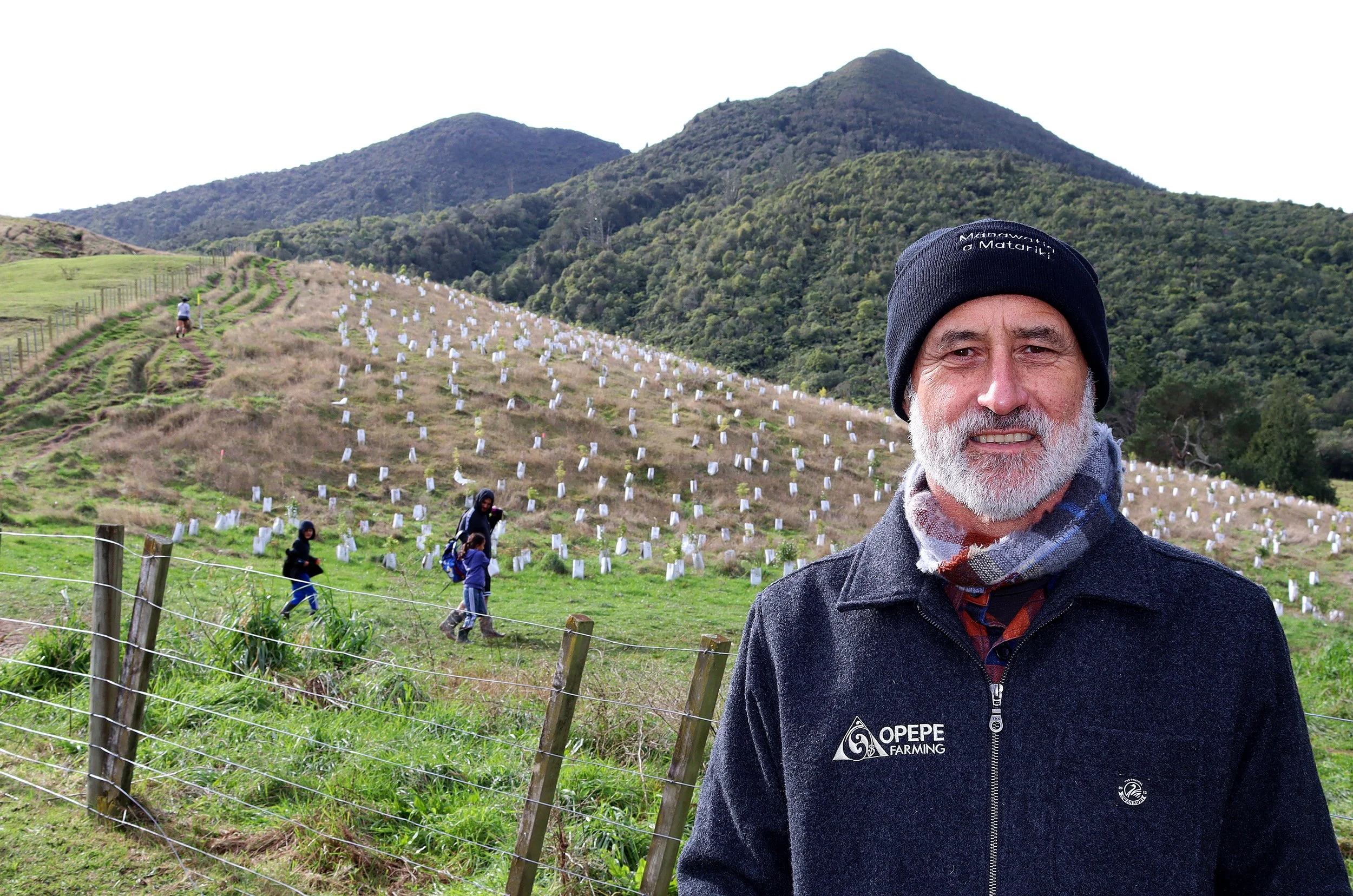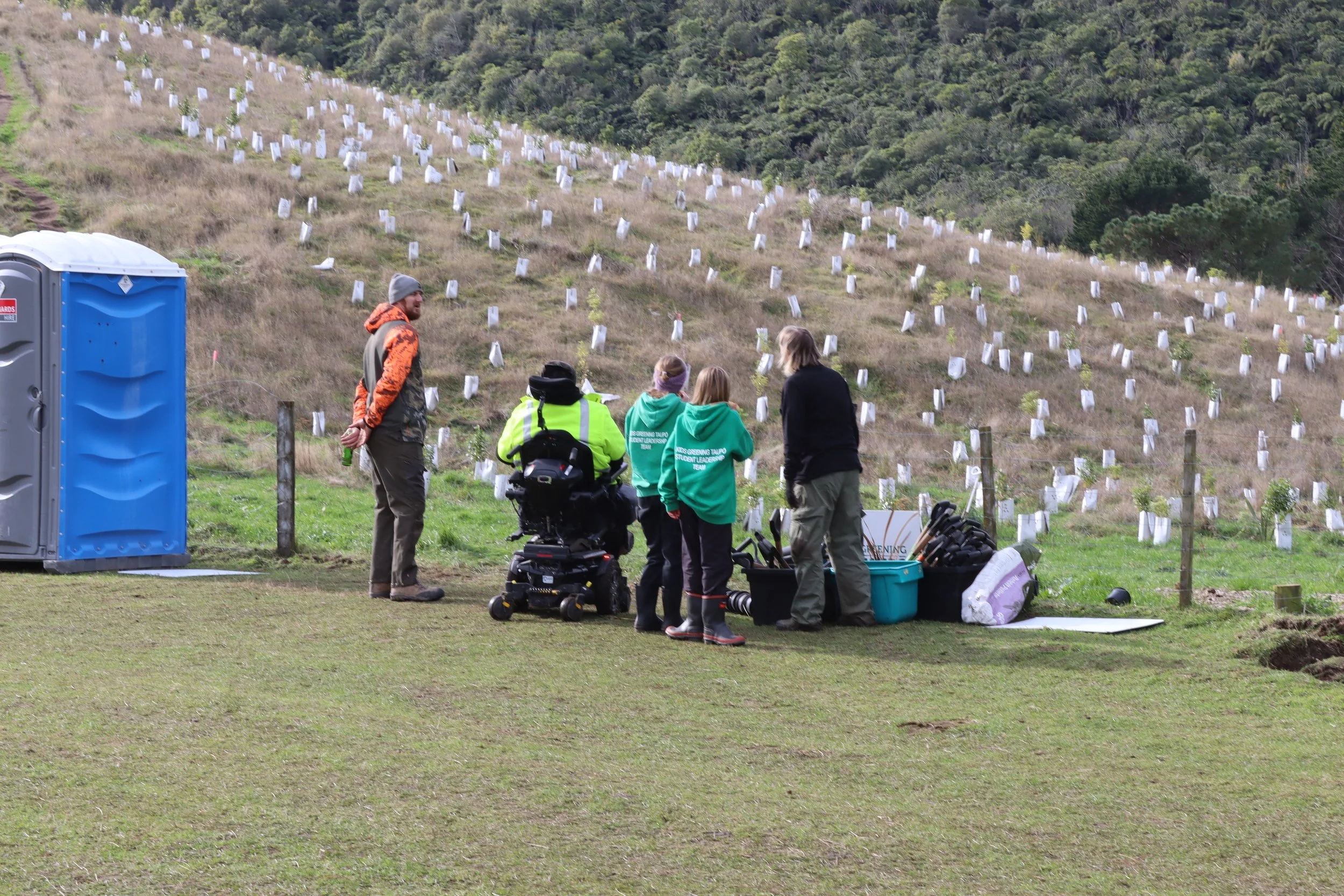Restoring the cloak of Tauhara
Te Mana o Tauhara Charitable Trust chairman Jan Hania explains the project to restore the lower slopes of Mt Tauhara. Photo: Dan Hutchinson
The lower slopes of Mt Tauhara are getting a lot aroha with hundreds of children planting 6000 trees as part of a huge restoration project.
By Dan Hutchinson
The lower slopes of Mt Tauhara are getting a lot aroha with hundreds of children planting 6000 trees as part of a huge restoration project.
The planting, now in its second year, is happening at the end of Mountain Rd where the walking track up the maunga begins.
Te Mana o Tauhara Charitable Trust chairman Jan Hania says they have big plans for the restoration of native flora and fauna.
That includes upgrading the lower section of the track to make it more accessible for everyone.
Tauhara Collective project lead Te Aue Addison says the project is threefold; It is about restoring the whenua, reconnecting people and regenerating the landscape to create natural biodiversity corridors, for the likes of native birds to thrive.
The mountain is owned by several hapu trusts that have combined their resources with numerous other local organisations and sponsors to bring the project to life.
Jan says it is all about collaboration and working together.
“It's long term, and I could reel off 20 different partners and I wouldn't name them all.
Of the 6000 trees being planted on Saturday, about half come from He Tipu which is now running the former Taupō Native Nursery and the other half come from a collaboration between Greening Taupō and the Tongariro Prison nursery and from schools which have their own nurseries.
Workers survey the plantings. Photo: Dan Hutchinson
“When you get a compelling vision, which is bigger than all of us and people can feel good about reconnecting to the land, restoring it themselves, people come and they have joyful experiences.”
“This particular project is about the mauri, isn't it? This particular project is about the restoration of the maunga, the reconnection of the ecological systems and ourselves and then the ongoing regeneration for years to come.”
It is nestled in a wider programme, with all of the surrounding land blocks managed by Ōpepe Farms, all going down the path of regenerative farming.
“So, we're completely flipping the script, we're here to serve the land and produce good food.”
The planting project is about “lowering the cloak of the maunga” and they want to start with about 20-30 hectares of native planting in the vicinity of the lower part of the walking track, combining it with predator and pest control.
“So, you're increasing the biodiversity footprint and the ecological systems within it. And then across the whole farm area, we've got about 500 hectares that we'll be planting in native trees.”
The planting is now in its second year and attention is now turning to making the track up to the existing bush line more accessible.
“We're keen to build a durable track that many more people can use. So, it's for the community and for the people who whakapapa here.”
Jan says they are lucky that so many people have been willing to “check in” into the project because it is for generations to come and is not something one group could do on its own.


